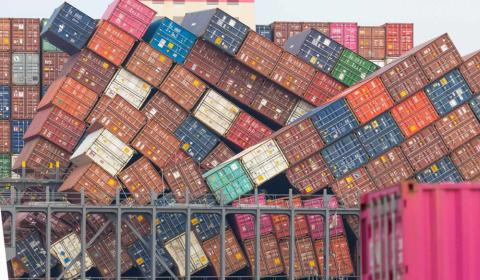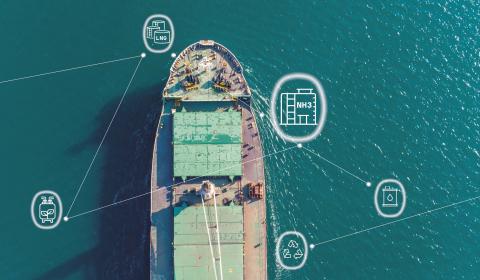
Mitigating risk of container loss
Containers are being shipped in ever-increasing numbers as the world continues its climb back from the COVID-19 pandemic and related setbacks. While it’s good to see the shipping industry returning to previously established norms, there are risks that go hand in hand with more container transport on the high seas.
Container ships continue to grow in size, carrying ever more boxes. With increased freight rates, even non-traditional vessels are now being deployed to the container trade. The pressure to ship increased volumes faced by operators—combined with crews fatigued from COVID-19-related changeover restrictions—is creating a perfect storm for container loss incidents. Over a nine-month period starting in May 2020, more than 3,000 containers were lost globally—an exceptional amount from the perspective of associated cost and environmental impact.
Identifying lashing risk origins
Safe container stowage is a balancing act between the lashing system capacity and the forces exerted on a ship during the voyage. Stacks up to 11 containers high are fastened with twist locks, lashing bars and turnbuckles. This system relies on the containers’ structural strength and interior weight to secure the stacks from toppling or sliding overboard.
Lashing systems can only withstand so much rolling, pitching, and heaving before becoming overloaded and failing. If the weight and content of containers are misdeclared, the lashing may be overloaded sooner due to the hidden extra weight. Similarly, if fatigued crew members fail to retighten loose lashings as needed during a voyage, the capacity of the lashing system will be compromised.
Some of the best opportunities for risk reduction lie earlier in the supply chain, when goods are still far from the ships that will carry them overseas. Accurate information concerning containers’ contents, condition and weight, enables the planner to plan a container stow that lies within the capabilities of the ship’s container securing system. However, some estimates suggest that 1 in 5 containers are misdeclared. This contributes to irregular loading within the stack and can even lead to potentially highly flammable goods being stowed in areas that increase risks of fire or explosion.
Working with a “just in time” mentality, crew are given little time and, sometimes, no means to analyze the proposed container stow before loading commences. They therefore have no basis on which to reject the securing arrangement or to request changes—even if it is in their power to do so. The cost of subsequent stow collapse currently extends far beyond simple lost cargo claims: environmental regulations that demand lost container recovery can result in a much higher bill.
It’s not always plain sailing
Not all risks can be mitigated before a vessel sets sail and most incidents take place during inclement weather. Today, ships have routing advice and onboard tools to avoid the worst of the weather and predict stowage conditions using historic wave data for a particular voyage. Bureau Veritas assesses and approves these digital tools to ensure that shipowners see a tangible reduction in risk.
TMC, part of Bureau Veritas Group since 2016, leverages its forensic experience to investigate container loss incidents, thus contributing to our knowledge base and helping avoid reoccurrences. For example, Bureau Veritas has developed the class notation ECFP, helping set modern fire safety standards for container ships as a result of these investigations.
While it’s impossible to completely rule out the possibility of container losses or other incidents, better training, better equipment, and better protection all help reduce the risks. TMC and Bureau Veritas will continue working to secure the supply chain, and thus protect ships, their crews and the cargoes they carry.










